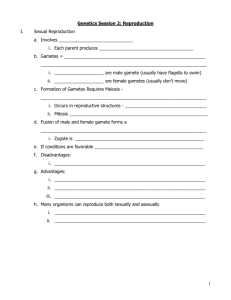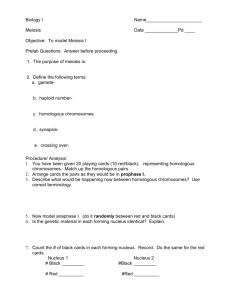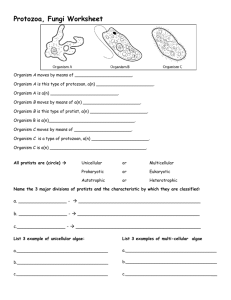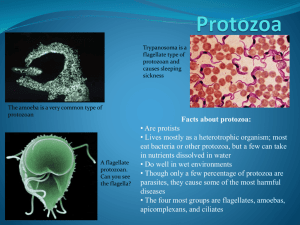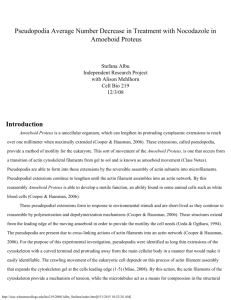Biology 1002, Intersession 2010
advertisement
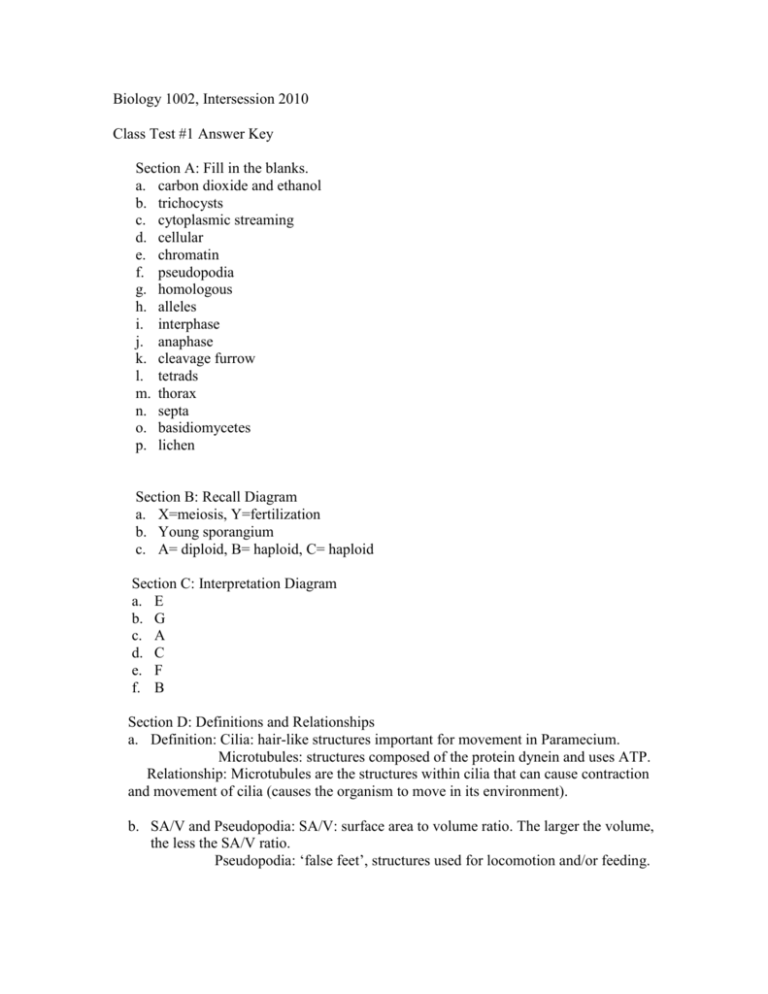
Biology 1002, Intersession 2010 Class Test #1 Answer Key Section A: Fill in the blanks. a. carbon dioxide and ethanol b. trichocysts c. cytoplasmic streaming d. cellular e. chromatin f. pseudopodia g. homologous h. alleles i. interphase j. anaphase k. cleavage furrow l. tetrads m. thorax n. septa o. basidiomycetes p. lichen Section B: Recall Diagram a. X=meiosis, Y=fertilization b. Young sporangium c. A= diploid, B= haploid, C= haploid Section C: Interpretation Diagram a. E b. G c. A d. C e. F f. B Section D: Definitions and Relationships a. Definition: Cilia: hair-like structures important for movement in Paramecium. Microtubules: structures composed of the protein dynein and uses ATP. Relationship: Microtubules are the structures within cilia that can cause contraction and movement of cilia (causes the organism to move in its environment). b. SA/V and Pseudopodia: SA/V: surface area to volume ratio. The larger the volume, the less the SA/V ratio. Pseudopodia: ‘false feet’, structures used for locomotion and/or feeding. Relationship: Pseudopodia increase the SA/V ratio, which leads to more efficient locomotion and uptake of food. c. Definition: Plasmogamy: fusion of the cytoplasm of two different cells Karyogamy: fusion of the nuclei from two different cells Relationship: Plasmogamy and karyogamy occur during life cycles (of slime molds). Section E: Multiple choice. 1. b. 2. e. Section F: Explanation Question Key points needed for full marks (in addition to properly formatted short essay) a. Independent assortment: Depends on how homologous chromosomes line up at the metaphase plate during metaphase I of meiosis. For each homologous pair of chromosomes, one comes from your father and one from your mother. 50/50 chance for each pair, 2 possibilities for each pair. 23 pairs (humans) = 223 different gametes. Crossing over: occurs during prophase I of meiosis during synapsis of homologous chromosomes and tetrad formation. Non-sister chromatids exchange pieces of chromosome. 2-3 per pair of chromosomes. Random Fertilization: any sperm can fertilize any egg. 8 million possible types of each gamete. b. Define bilateral symmetry: there is one plane of symmetry that divides the organism into equal and opposite halves. There is an anterior and posterior end, right and left sides, and dorsal and ventral areas too. Cephalization: the concentration of sense organs at the anterior portion of the organism. Bilateral symmetry means that the organism will have an anterior portion. Animals move parallel to their longitudinal axis to reduce drag (force that opposes the thrust) and therefore one end of the animal will encounter the environment first. Sense organs develop at that end so that they can sense their environment as they are moving (good for detecting any threats or the presence of food). Therefore, they develop cephalisation at the anterior end.

